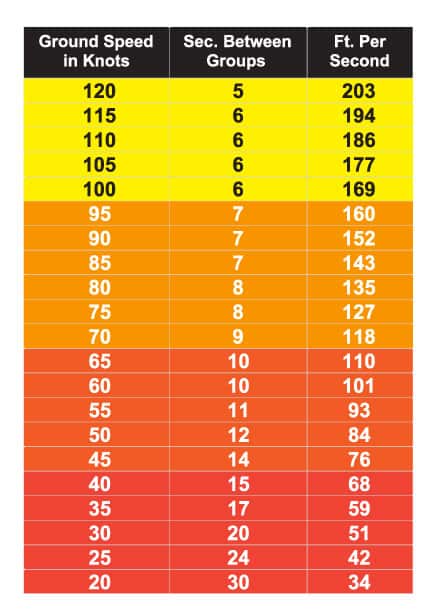Wait for it... waaaaiiiit for iiiittttt! BAM! That came out of nowhere. After leaving very little separation between exits, this second jumper had an uneventful jump, but as he deployed his main canopy, he went screaming through the first jumper’s already-inflated canopy -- and he lost a shoe in the process.
The second jumper pretty much chased the first one out the door, giving less than three seconds of separation. As a result, they were flying right above the first jumper throughout the whole skydive.
As noted, this video didn’t come with any comments from the submitter. However, this type of incident is often caused by a jumper feeling rushed to get out the door or flying up/down jump run.
Maybe the groups in front of them took forever in the door, and they were worried about landing off. Perhaps they were a new jumper, got over excited, and counted too fast. There’s a dozen reasons why they may have rushed to get out. None are a good excuse for this mistake.
If the plane is flying fast enough to justify a 3 second separation between groups (as was the case in this video), that might be a red flag to not be jumping out of it in the first place! Even in a plane traveling at 100 knots ground speed, you should be giving someone around 6 seconds before you exit.
We like dropzones that post an exit separation chart in the plane both in the front and in the back. We love pilots who get on an intercom at the green light and note the ground speed and the separation for everyone on the plane.
Here's a helpful exit separation chart from Skydive Chicago (SDC):

Everyone tends to count too fast. What we think in our heads as “one------two------three------four------five------six” is actually “one!two!three!four!five!six!” There are a few ways to address that issue.
One is to count out loud. By verbalizing one-one-thousand, two-one-thousand, etc. and nodding your head to the rhythm of each syllable, you’ll force yourself to slow down.
For newer jumpers, another method is to hold your fingers out in front of your face and count out loud while counting on them; combining verbalization with a physical action also tends to help jumpers slow down their count.
Wait for it... waaaaiiiit for iiiittttt! BAM! That came out of nowhere. After leaving very little separation between exits, this second jumper had an uneventful jump, but as he deployed his main canopy, he went screaming through the first jumper’s already-inflated canopy -- and he lost a shoe in the process.
The second jumper pretty much chased the first one out the door, giving less than three seconds of separation. As a result, they were flying right above the first jumper throughout the whole skydive.
As noted, this video didn’t come with any comments from the submitter. However, this type of incident is often caused by a jumper feeling rushed to get out the door or flying up/down jump run.
Maybe the groups in front of them took forever in the door, and they were worried about landing off. Perhaps they were a new jumper, got over excited, and counted too fast. There’s a dozen reasons why they may have rushed to get out. None are a good excuse for this mistake.
If the plane is flying fast enough to justify a 3 second separation between groups (as was the case in this video), that might be a red flag to not be jumping out of it in the first place! Even in a plane traveling at 100 knots ground speed, you should be giving someone around 6 seconds before you exit.
We like dropzones that post an exit separation chart in the plane both in the front and in the back. We love pilots who get on an intercom at the green light and note the ground speed and the separation for everyone on the plane.
Here's a helpful exit separation chart from Skydive Chicago (SDC):

Everyone tends to count too fast. What we think in our heads as “one------two------three------four------five------six” is actually “one!two!three!four!five!six!” There are a few ways to address that issue.
One is to count out loud. By verbalizing one-one-thousand, two-one-thousand, etc. and nodding your head to the rhythm of each syllable, you’ll force yourself to slow down.
For newer jumpers, another method is to hold your fingers out in front of your face and count out loud while counting on them; combining verbalization with a physical action also tends to help jumpers slow down their count.